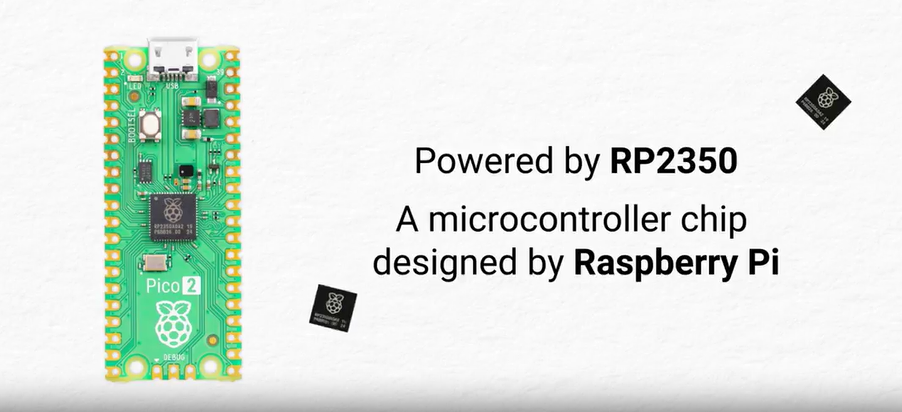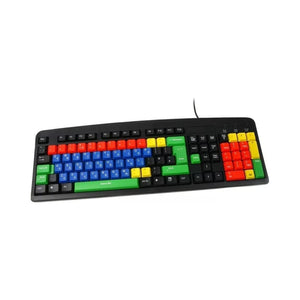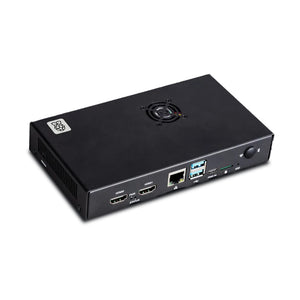The Raspberry Pi Pico 2 has arrived, bringing exciting new features and improvements over its predecessor. At its core, the Pico 2 is powered by the new Raspberry Pi RP2350 microcontroller, which offers a choice between dual-core RISC-V and Arm Cortex-M33 architectures. Let’s dive into what makes this new board and its microcontroller stand out.

What’s New with the Raspberry Pi Pico 2?
The Raspberry Pi Pico 2 continues to build on the foundation laid by the original Pico but with significant upgrades. This board now integrates the RP2350 microcontroller, which introduces a range of new capabilities and enhancements:
- Microcontroller Choice: The RP2350 features a dual-core setup, where you can choose between Arm Cortex-M33 and RISC-V Hazard3 cores. This flexibility allows developers to tailor their applications according to their preferred architecture. While both cores run at 150 MHz, they offer different advantages in terms of performance and features.
- Increased Memory: With 520 KB of on-chip SRAM, the Pico 2 provides more memory compared to the original Pico’s 264 KB, enhancing its capability to handle complex applications.
- Expanded I/O Options: The Pico 2 includes a 26-pin GPIO header similar to the first generation but adds more functionality with up to 16 PWM channels, 4 ADC inputs, and 3 PIO blocks with 12 programmable I/O state machines.
- Enhanced Security: For the first time, the Pico 2 incorporates hardware security features such as Arm TrustZone technology and secure boot (for Arm Cortex-M33). Additionally, the RP2350 microcontroller supports hardware-based encryption and anti-fuse OTP key storage.
Diving into the RP2350 Microcontroller

The heart of the Pico 2, the RP2350 microcontroller, is designed to cater to both traditional and emerging needs in microcontroller applications:
- Dual-Core Architecture: The RP2350 offers a unique choice between a dual-core Arm Cortex-M33 and a dual-core RISC-V Hazard3 processor. This dual-core design means you can switch between architectures depending on your project’s requirements, although only one core cluster can be active at any given time.
- Memory and Storage: It comes with up to 520 KB of SRAM and supports up to 16 MB of external QSPI flash storage. This substantial memory capacity is perfect for complex projects and applications that require significant data handling.
- Peripheral Options: Depending on the variant (RP2350A or RP2350B), the microcontroller provides a range of GPIOs, ADCs, and PWM channels, with the RP2350B offering a higher count of peripherals compared to the RP2350A.
- Security Features: For enhanced security, the RP2350 integrates anti-fuse OTP for key storage, SHA-256 acceleration, hardware True Random Number Generation (TRNG), and glitch detection. These features are crucial for secure data handling and protection against tampering.
Specifications at a Glance
Here’s a summary of the Raspberry Pi Pico 2 specifications:
- Processor: Dual-core Arm Cortex-M33 @ 150 MHz with TrustZone or Dual-core RISC-V Hazard3 @ 150 MHz
- Memory: 520 KB on-chip SRAM
- Storage: 4 MB on-board QSPI flash
- Connectivity: Micro USB 1.1, 26-pin GPIO header, USB 1.1 host/device
- I/O: 2x UART, 2x SPI, 2x I2C, 16x PWM, 4x ADC, 3x PIO blocks, 12x PIO state machines
- Security: Secure boot, hardware encryption, TRNG
- Package: QFN-60
- Power Supply: 1.8 to 5.5V DC
- Dimensions: 51 x 21 mm
- Temperature Range: -20°C to +85°C
Why Upgrade to the Raspberry Pi Pico 2?
The Raspberry Pi Pico 2 offers an impressive upgrade for hobbyists and professionals alike. The increased memory, enhanced I/O capabilities, and additional security features make it a versatile tool for a wide range of projects, from simple electronics to more complex embedded systems. Its dual-core flexibility allows for experimentation and adaptation to different project needs.
With a price tag of just $5, the Pico 2 continues Raspberry Pi’s tradition of providing high-performance, affordable microcontrollers. Available both individually and in bulk, the Pico 2 is set to be a staple in the maker community for years to come, with a production lifecycle extending until at least January 2040.
For developers and enthusiasts eager to explore the new capabilities of the Pico 2, more details and resources are available on the Raspberry Pi documentation website and GitHub repository. Whether you’re upgrading from the original Pico or starting fresh, the Pico 2 offers a wealth of features to ignite your creativity.








